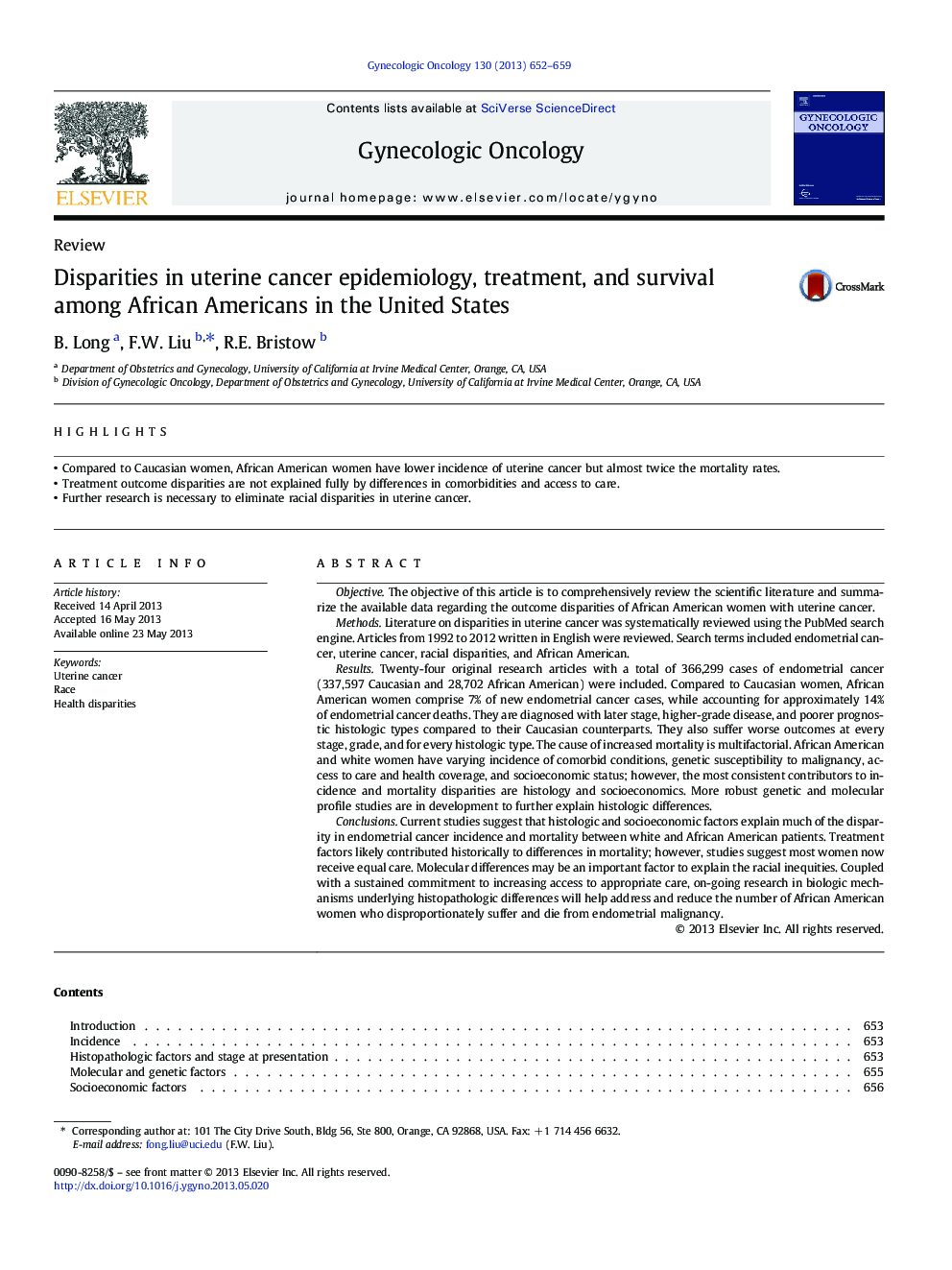| کد مقاله | کد نشریه | سال انتشار | مقاله انگلیسی | نسخه تمام متن |
|---|---|---|---|---|
| 6184572 | 1600075 | 2013 | 8 صفحه PDF | دانلود رایگان |
- Compared to Caucasian women, African American women have lower incidence of uterine cancer but almost twice the mortality rates.
- Treatment outcome disparities are not explained fully by differences in comorbidities and access to care.
- Further research is necessary to eliminate racial disparities in uterine cancer.
ObjectiveThe objective of this article is to comprehensively review the scientific literature and summarize the available data regarding the outcome disparities of African American women with uterine cancer.MethodsLiterature on disparities in uterine cancer was systematically reviewed using the PubMed search engine. Articles from 1992 to 2012 written in English were reviewed. Search terms included endometrial cancer, uterine cancer, racial disparities, and African American.ResultsTwenty-four original research articles with a total of 366,299 cases of endometrial cancer (337,597 Caucasian and 28,702 African American) were included. Compared to Caucasian women, African American women comprise 7% of new endometrial cancer cases, while accounting for approximately 14% of endometrial cancer deaths. They are diagnosed with later stage, higher-grade disease, and poorer prognostic histologic types compared to their Caucasian counterparts. They also suffer worse outcomes at every stage, grade, and for every histologic type. The cause of increased mortality is multifactorial. African American and white women have varying incidence of comorbid conditions, genetic susceptibility to malignancy, access to care and health coverage, and socioeconomic status; however, the most consistent contributors to incidence and mortality disparities are histology and socioeconomics. More robust genetic and molecular profile studies are in development to further explain histologic differences.ConclusionsCurrent studies suggest that histologic and socioeconomic factors explain much of the disparity in endometrial cancer incidence and mortality between white and African American patients. Treatment factors likely contributed historically to differences in mortality; however, studies suggest most women now receive equal care. Molecular differences may be an important factor to explain the racial inequities. Coupled with a sustained commitment to increasing access to appropriate care, on-going research in biologic mechanisms underlying histopathologic differences will help address and reduce the number of African American women who disproportionately suffer and die from endometrial malignancy.
Journal: Gynecologic Oncology - Volume 130, Issue 3, September 2013, Pages 652-659
